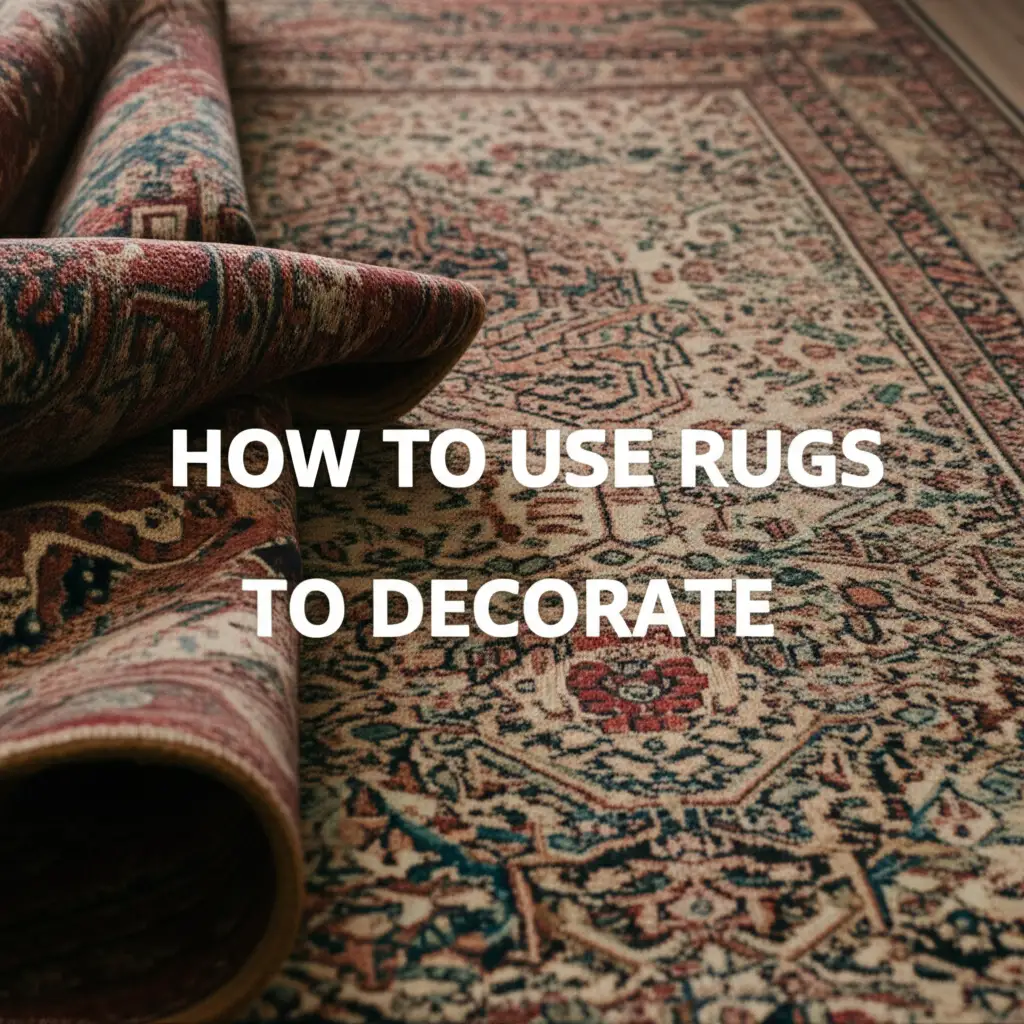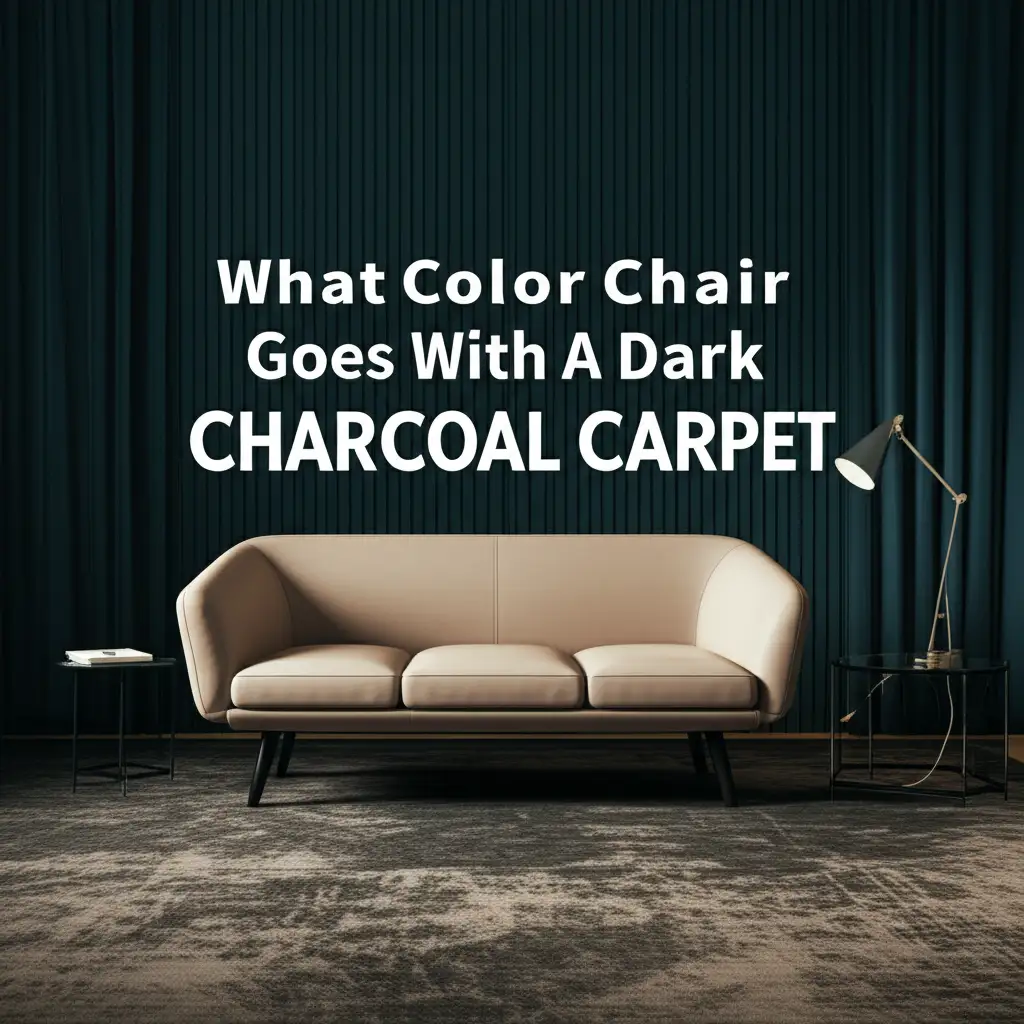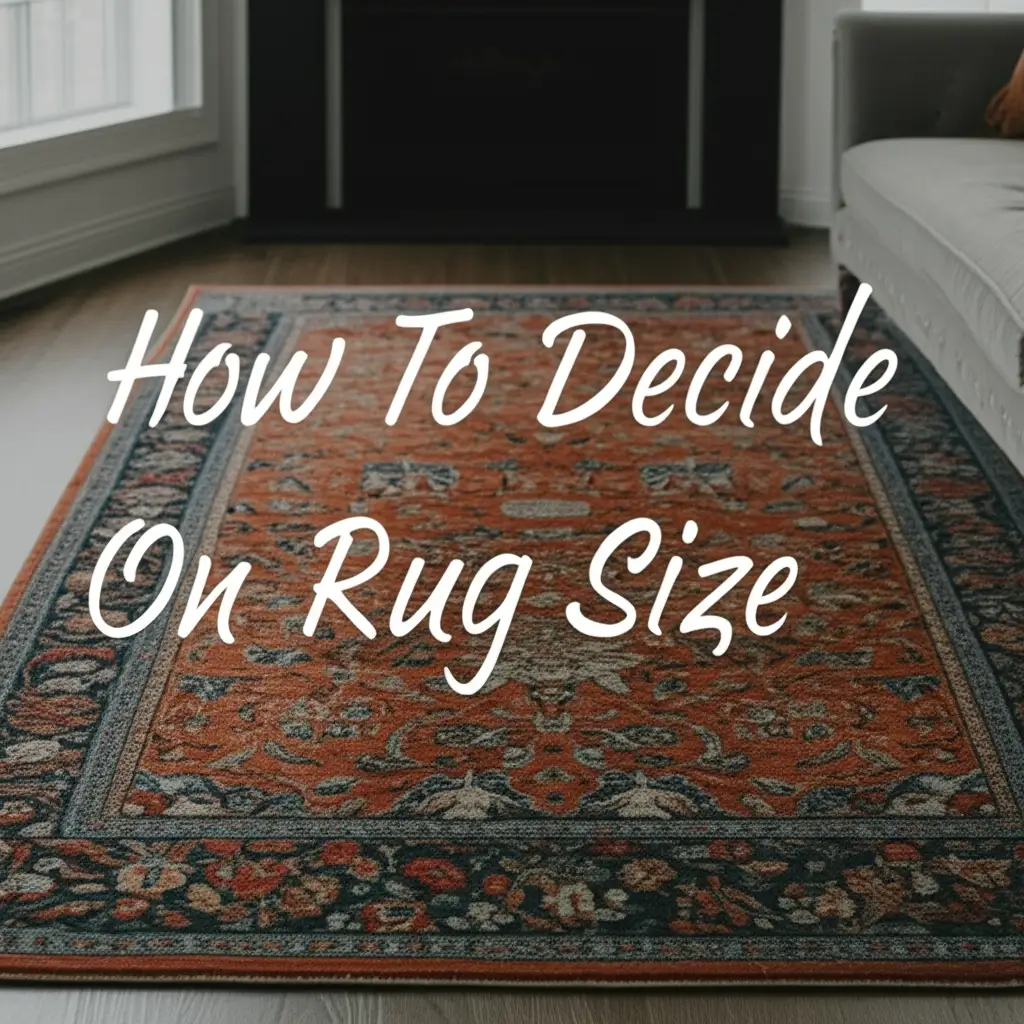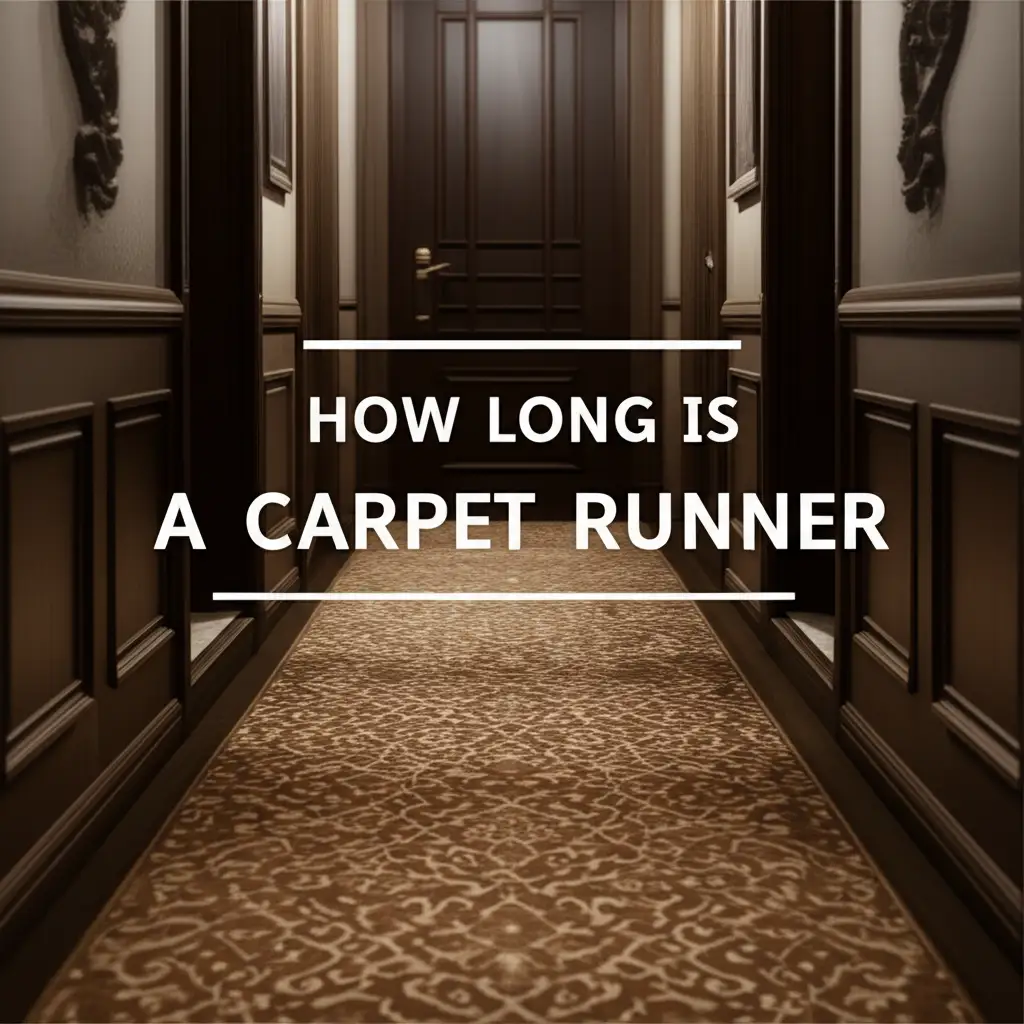· Mason Everett · Home Decor Tips · 15 min read
How To Measure For Entryway Rug
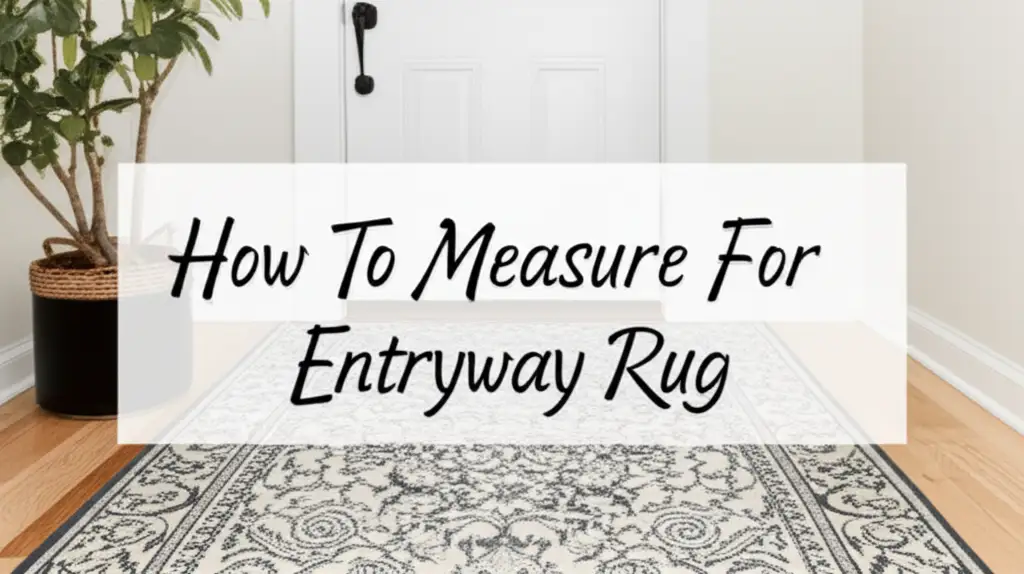
How To Measure For Entryway Rug With Confidence
Your entryway is the first impression visitors get of your home. A well-chosen rug can make this space feel warm and inviting. However, the wrong rug size can disrupt the entire look. Many people struggle with finding the perfect fit. Learning how to measure for entryway rug needs removes much guesswork.
A properly sized rug improves your home’s appearance. It also protects your floors from daily wear and tear. This guide explains all you need to know. We will cover tools, different entryway types, and a step-by-step measuring process. You will soon choose your entryway rug with full confidence. This article gives you the knowledge to get it right.
Takeaway:
- Measure door clearance first to avoid rug obstruction.
- Consider the entryway’s shape and size; a rug should fill the space without overwhelming it.
- Use painter’s tape to visualize the rug’s footprint before buying.
- Allow for adequate space around the rug’s edges for a balanced look.
- A rug pad is essential for safety and to extend the rug’s life.
How do you measure an entryway for a rug?
To measure for an entryway rug, first open your front door to ensure clearance. Measure the width of your doorway and the length of the open space inside. Consider if the rug will sit entirely within the door swing or extend into a larger foyer area. Aim for a rug that leaves 6-12 inches of floor visible on all sides.
Why Getting Entryway Rug Dimensions Right Matters
Getting the correct rug dimensions for your entryway is very important. A rug that is too small can look lost in a large space. It does not provide enough coverage for foot traffic. A rug that is too big may bunch up or block your door from opening properly. This creates a tripping hazard. Proper measurements ensure your rug serves its purpose well.
The right size rug helps define your entry area. It welcomes guests into your home with a sense of order. It also protects your floors from dirt, moisture, and scratches. An ill-fitting rug fails to do these jobs effectively. It can also make your entryway look messy instead of inviting. Measuring carefully helps you avoid common mistakes.
An ideal entryway rug fits your space’s scale. It allows for easy door swing and walk paths. It also adds warmth and style without overwhelming the area. Think about how people move through your entryway. Ensure the rug enhances this movement, rather than hinders it. This attention to detail makes a big difference.
A rug also provides sound absorption. It makes your entryway quieter and more comfortable. When the rug fits well, it performs this function better. Incorrect sizes can lead to premature wear or safety problems. Invest time in measuring to enjoy all the benefits a great entryway rug offers.
Essential Tools For Measuring Your Entryway Space
You need a few simple tools to measure your entryway accurately. Having the right equipment makes the job much easier. It also helps you get precise numbers. This ensures you buy a rug that fits perfectly. Gather these items before you begin.
A reliable tape measure is your primary tool. A metal tape measure, typically 25 feet or longer, works best. This type of tape measure stays stiff, making it easy to measure long distances alone. A fabric measuring tape can stretch, giving less accurate results. Make sure your tape measure is clean and easy to read.
You will also need a notepad and a pen or pencil. Write down your measurements immediately. This prevents mistakes or forgetting numbers. It also helps you sketch out your entryway layout. This sketch can be very helpful when you shop for rugs.
Blue painter’s tape is another useful item. You can use it to outline the rug’s proposed size on your floor. This helps you visualize how the rug will look in the space. You can walk on it and open the door over it. This trick helps confirm the best dimensions. It shows if the rug will interfere with door swing or traffic flow.
A level or straight edge can be helpful for drawing straight lines with painter’s tape. This ensures your visualized rug is perfectly rectangular or square. These tools help you confidently choose the best rug size. They make the measuring process smooth and easy.
Understanding Your Entryway Space: Types and Considerations
Before you measure, understand the type of entryway you have. Entryways come in many shapes and sizes. Each requires a slightly different approach to measurement. Knowing your space helps you choose the right rug shape and size. Consider how the space functions daily.
A small, compact entryway or apartment entry often benefits from a smaller, standard-sized rug. Here, a rectangular rug or a simple door mat works best. The rug should not block the door or extend too far into the living space. Its purpose is primarily to catch dirt. Measure the width of the door frame and the depth of the immediate area inside.
For a larger foyer or an expansive entryway, you have more options. You might consider a larger area rug or even a round rug. These spaces can handle more substantial pieces. They help define zones or add a grand statement. Measure the entire open floor space you wish the rug to cover. Leave a generous border of bare floor around the rug’s edges. This creates a framed look. When looking at larger rugs for such spaces, remember to consider overall room proportions, similar to how one might choose a rug size for a 12x12 room.
Hallway entryways are long and narrow. They need a runner rug. Measure the length of the hallway you want the runner to cover. Also, measure its width. You typically want the runner to leave several inches of bare floor on each side. It should also start a few inches from the front door and end before any major doorways.
Always check door clearance first. Open your front door fully. Measure the distance from the floor to the bottom of the door. This measurement tells you the maximum rug pile height you can use. A rug that is too thick will prevent your door from opening. This is a common but easy mistake to avoid.
Step-by-Step Guide to Measuring for Entryway Rugs
Measuring for an entryway rug involves a few clear steps. Follow these instructions for accurate results. This process helps you visualize the rug in your space. It also ensures it fits perfectly.
Measuring for Rectangular/Square Entryways
Most entryways are rectangular or square. Start by clearing the area of any obstructions. Open your front door completely. Measure the distance from the floor to the bottom of the door. This is your maximum rug thickness. Your rug must be thinner than this measurement.
Next, decide how much of the floor you want the rug to cover. Typically, you want the rug to sit a few inches away from the wall or any furniture. The rug should feel centered in the space. Use blue painter’s tape to outline your desired rug dimensions on the floor. This visual aid is very helpful.
Measure the length and width of your taped-off area. Start your measurements from inside the door swing. For instance, if your door opens inward, your rug should not extend so far that the door edge scrapes it. A good rule is to have the rug start 6-12 inches inside the door opening. This ensures the door can open and close freely. Write down these length and width measurements.
Measuring for Hallway Runners
Hallway runners are ideal for long, narrow entryways. First, measure the total length of the hallway section you want to cover. It’s usually best to leave 6-12 inches of bare floor at each end of the runner. This prevents the hallway from looking too cramped. It also allows for easy cleaning.
Next, measure the width of the hallway. You want your runner to leave 4-6 inches of bare floor on each side. This creates a defined path without making the hallway feel smaller. Using painter’s tape to outline the runner’s path is especially useful here. Walk the length of the taped area. Ensure it feels comfortable and safe. Note these length and width measurements carefully.
Special Considerations for Irregular Entryways
Some entryways have unusual shapes or angles. For these spaces, you might consider custom-sized rugs. Or, you might combine smaller, standard rugs to fit the area. Measure the longest and widest points of your space. Then, consider how a standard rectangular or round rug might fit within these dimensions.
For L-shaped entryways, you could use two smaller rectangular rugs or a custom L-shaped rug. Measure each leg of the ‘L’ as if it were a separate hallway or rectangular space. Use painter’s tape to define the boundaries. Imagine how a rug would best fill the primary traffic zone. You want to ensure safe movement and floor protection. Accurate measurements prevent wasted purchases. Thinking about how different rug sizes relate to specific areas, like considering what proportions for an area rug in a furniture grouping, can help you achieve balance.
Common Entryway Rug Sizes and When to Use Them
Knowing common rug sizes helps you narrow down your choices after measuring. Most rug manufacturers offer standard dimensions. Understanding these sizes makes shopping easier. You can often find a good fit without needing a custom rug.
1. Small Doormat Size (18” x 30” or 2’ x 3’): This size is perfect for very small entryways. It fits just inside or outside a single door. It serves mainly as a place for wiping shoes. This rug is ideal for apartments or tight spaces where a larger rug would block the door. It provides basic floor protection and dirt trapping.
2. Standard Entryway Rug (2’ x 4’ or 3’ x 5’): These are popular choices for many average-sized entryways. A 2’ x 4’ rug works well for a single door that opens into a small foyer. A 3’ x 5’ rug offers more coverage. It suits slightly larger foyers. It gives more space to stand and remove shoes. This size also defines the entry area better.
3. Medium Area Rug (4’ x 6’ or 5’ x 7’): For more spacious foyers or open-concept entryways, a 4’ x 6’ or 5’ x 7’ rug is a good choice. These sizes fill the space without reaching wall-to-wall. They allow for some furniture in the entryway, like a console table. Such rugs create a grander entrance. They also offer significant floor protection. This size can also work well in larger rooms, much like selecting a rug size for a 12x12 room requires considering the overall space.
4. Runner Rugs (2’ x 6’, 2’ x 8’, 2’ x 10’ and longer): Runner rugs are specifically designed for long, narrow spaces. They are perfect for hallways that act as an entryway. Measure the length of your hall. Choose a runner that leaves 6-12 inches of bare floor at each end. This creates a neat appearance. Runners protect high-traffic areas and add visual length.
5. Round Rugs (4’ or 5’ diameter): Round rugs work well in square or octagonal entryways. They can also soften the lines of a rectangular space. They are great for creating a focal point. Measure the largest diameter you can fit, allowing space around the edges. Round rugs add a unique design element.
Remember these are general guidelines. Your specific entryway measurements are the most important factor. Always check your measurements against the rug’s actual dimensions.
Factors Beyond Size: Material, Style, and Functionality
While size is important, other factors also influence your entryway rug choice. The material, style, and functional properties are key. These elements contribute to the rug’s durability, appearance, and ease of care. Consider these points after you have determined the ideal size.
Material Choice: Entryway rugs face heavy foot traffic, dirt, and moisture. Choose materials that can withstand these challenges. Synthetic fibers like nylon or polypropylene are very durable and easy to clean. They resist stains and moisture well. Natural fibers like jute, sisal, or wool also work. Jute and sisal are tough and textural, but less soft. Wool is durable and soft, but may need more care. When considering wool, it is good to know how do you clean an area wool rug. This knowledge helps in maintaining its appearance.
Style and Design: The rug’s style should complement your home’s overall decor. Do you prefer a modern, traditional, or rustic look? Consider patterns, colors, and textures. A patterned rug can hide dirt better than a solid color rug. Choose colors that blend with your existing decor. Or, pick a bold color to make a statement. The rug sets the tone for your home.
Functionality and Safety: An entryway rug must be practical. It should trap dirt and moisture effectively. Look for rugs with a low pile or a flat weave. These are easier to clean and less likely to trip on. A non-slip rug pad is essential. It prevents the rug from sliding, making it safer. It also adds cushion and extends the rug’s life. Understanding how to tape an area rug to carpet pad can be useful for keeping your rug secure.
Think about maintenance. How often will you need to clean your entryway rug? Some materials are more stain-resistant than others. Darker colors or busy patterns can hide everyday dirt. If you have pets or children, choose a rug that is easy to vacuum and spot clean. A well-chosen rug provides both beauty and practicality.
Placement Principles for Your Entryway Rug
Proper placement of your entryway rug enhances its look and function. Once you have measured and chosen the right size, positioning it correctly is the next step. Good placement ensures safety, aesthetics, and practicality.
First, ensure the rug does not interfere with the door. The door should swing freely over the rug without catching or bunching it. If your door opens inward, place the rug far enough inside the doorway. A common guideline is to have at least 6-12 inches of space between the rug and the door’s arc. This distance depends on your door’s swing and the rug’s thickness.
Next, consider the flow of traffic. Your entryway rug should guide visitors into your home smoothly. It should feel inviting, not like an obstacle. For rectangular entryways, center the rug within the space. Leave an equal amount of bare floor around all sides if possible. This creates a balanced and tidy look.
For long hallways, runners should align with the hallway’s length. Leave a few inches of bare floor on both sides of the runner. This defines the path without making the hall feel cramped. Also, allow a few inches of space at each end of the runner. This prevents it from looking “cut off.”
If your entryway includes furniture, like a console table or bench, position the rug to complement these pieces. The rug should extend under the front legs of furniture if the space allows. This visually anchors the furniture. This concept is similar to placing a rug in a furniture grouping. The rug acts as a base for the entire vignette.
Lastly, always use a rug pad. A rug pad keeps the rug from slipping and sliding. This is crucial for safety in a high-traffic area like an entryway. It also protects your floor and extends the life of your rug by preventing wear. The rug pad should be slightly smaller than the rug itself, typically by an inch on each side. This ensures the pad is not visible.
FAQ Section
What is the best size rug for an entryway?
The best size rug for an entryway depends on your specific space. For small entries, a 2x3 or 2x4 foot rug often works. Larger foyers might use a 3x5 or even 4x6 foot rug. Always measure your door clearance first. Ensure the rug allows the door to open freely.
How much space should be around an entryway rug?
Ideally, leave 6 to 12 inches of bare floor around the edges of your entryway rug. This creates a visual border. It also prevents the space from feeling overcrowded. For hallway runners, leave 4 to 6 inches on the sides and 6 to 12 inches at the ends.
Should an entryway rug go under the door?
No, an entryway rug should not go under the door. The rug should sit far enough inside the entryway so the door can swing completely open and close without hitting or dragging on the rug. Measure your door’s clearance from the floor. This tells you the maximum rug thickness you can use.
What direction should an entryway rug face?
An entryway rug, especially a rectangular one, typically faces the same direction as the main path of entry. For a front door, this means the longer side of the rug runs parallel to the direction of entry. For hallways, the runner runs along the length of the hall.
Can an entryway rug be too big?
Yes, an entryway rug can be too big. A rug that is too big can block the door from opening. It can also make the entryway feel cramped. It might even extend too far into other rooms. This disrupts the flow of your home. Proper measurement prevents these issues.
How do I stop my entryway rug from sliding?
To stop your entryway rug from sliding, use a non-slip rug pad underneath it. The rug pad grips both the floor and the rug. This prevents movement and adds cushioning. It also protects your floors. A rug pad is an essential safety item for high-traffic areas.
Conclusion
Choosing the perfect entryway rug begins with accurate measurement. You have learned how to measure for entryway rug success. This includes understanding your space, using the right tools, and following step-by-step instructions. Proper dimensions ensure your rug looks great and functions well. Remember to consider door clearance and traffic flow.
Beyond size, think about the rug’s material, style, and how easy it is to clean. These choices improve the rug’s durability and overall appeal. A well-placed rug with a non-slip pad ensures safety. It also extends the rug’s life. Now you have the knowledge to select an entryway rug with confidence. Take your measurements, find your ideal rug, and create a welcoming first impression.


